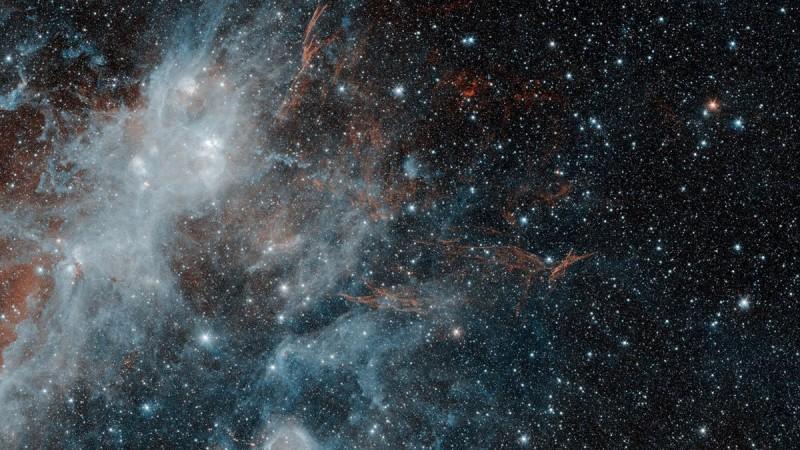
Stars are born in nebulas and gas clouds, live long lives and over the course of billions of years, give out light, heat and radiation. After billions of years, they run out of fuel and eventually explode. This event is called a supernova. What then happens after the explosion? NASA has just released an image exactly what is left after one of the biggest and most energetic events in the universe.
What is seen in the image above is the spot where there was once a star, now only a few wispy red clouds remain. These veins are made of energised gas, says NASA in a report. Called a supernova remnant, the one seen in the image is one of the larger examples within the Milky Way galaxy. It was captured by the Spitzer Space Telescope.
A supernova remnant, explains the report, is a sign of an exploded star. In this particular image, red filaments belong to a supernova remnant HBH 3, first observed in 1966. Parts of the remnant clouds in this case radiate light in the visible spectrum.

Branches of glowing material seen are likely molecular gas pummelled by the shock waves generated during the supernova. Energy from the blowback, explains NASA, likely energized remaining molecules which then caused them to radiate infrared light.
The white, clouds visible in this image is part of a complex of star-creating regions, notes the report. Named W3, W4 and W5, they are massive, extending far beyond this image. This scene is about 6,400 light years away from Earth, deep in the Milky Way galaxy.
HBH 3 remnant is about 150 light years in diameter, making it one of the largest ever supernova remnants observed from Earth. Chances are, it is also one of the oldest. Astronomers estimate that the actual supernova explosion might have happened between 80,000 to a million years ago.
NASA reports that it detected high energy gamma rays coming from the HB3 region using their Fermi Gamma-Ray Telescope in 2016. The rays might have come from the gases in one of the neighbouring star-forming regions which were excited by powerful particles spewed by the original supernova explosion.














